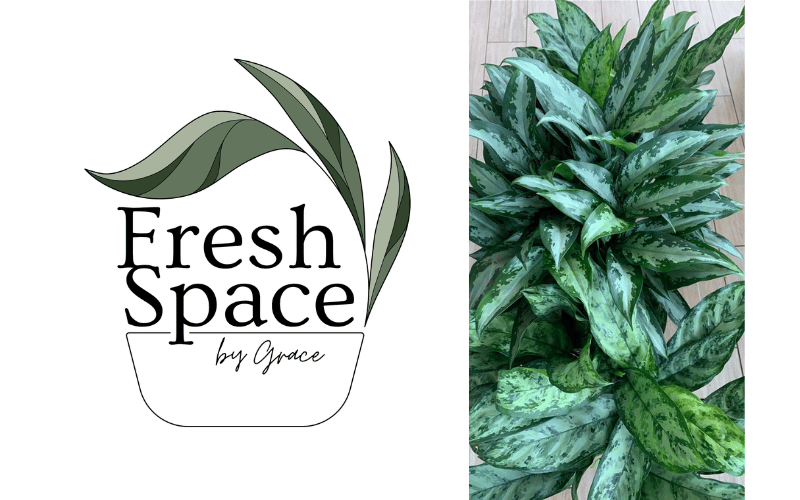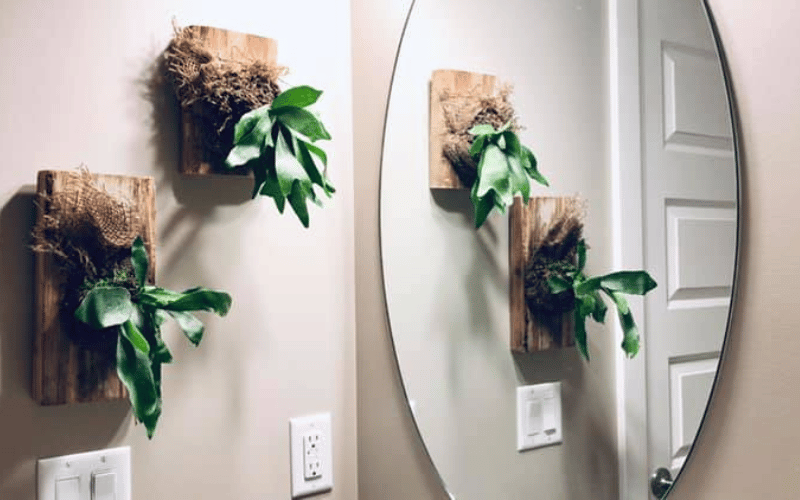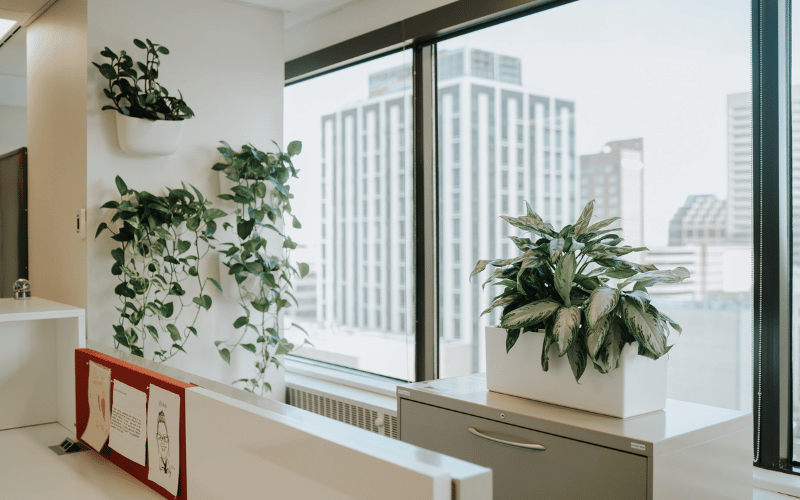Bringing the Outside In: Interior Design Featuring Plants
Brightness, dimension, texture and pattern: plants bring so much life and vibrance to a home. While we are all familiar with adding the odd potted plant to a shelf or side table, there’s so much more we can do with these leafy little friends to create visual interest and drama in our spaces.
Perhaps no one is more aware of the power of plants than Grace Salaysay, the interior plant consultant and designer behind the Edmonton-based, Fresh Space by Grace. Known for transforming any space into a calming, joy-filled place, Grace’s extensive knowledge of plants and design, Grace is no stranger to harnessing nature to create dynamic and unique interiors.

Check out Grace’s design at the Edmonton Home + Garden Show running March 23 to 26 at the Edmonton Expo Centre. Her impactful plant displays will be showcased on the Sleep Country Home + Garden Stage where many incredible guests - including HGTV Canada’s Bryan Baeumler will be on hand.
Ahead of this year’s show, we sat down with Grace to get her tips for reframing how we think of houseplants for some serious design payoff.
What are your favourite ways to use plants to create drama and visual interest in a home?
I love seeing plants displayed vertically, either mounted on walls or hanging from lofty spots. There is something so intriguing and eye-catching about greenery suspended or displayed at a height. It adds visual interest and draws the eyes upward.
One of my favourite ways to display indoor plants is the Wallygrow Eco Planters – which will also be part of the display at the Edmonton Home + Garden Show’s Sleep Country Canada Home + Garden Stage. In my home, I have a collection of plants displayed on the wall at my entryway. It’s quite the statement, and the first thing visitors see when they come to our home.

Another beautiful way I display some species of plants is by mounting them onto pieces of cedar or driftwood. There are a number of plants that do not actually grow in soil; these are called epiphytes. These plants don’t place roots in the ground to grow, but rather on the surface of other plants, such as the trunk of a tree.
Most plants will get their nutrients from the soil through their roots. An epiphytic plant coexists with another plant and gets its nutrients from the rain, air and decomposing material around it. Some of my favourite plants to display in this fashion are Staghorn Ferns, Birds Nest Ferns, Tillandsias, and Dischidas.

What are some easy-to-care-for plants for people just starting out?
There are so many places you can purchase indoor plants. You’ll find them in garden centers and nurseries, hardware and big box stores in the seasonal department, grocery store floral departments, specialty plant boutiques like Botaniful, flower shops and even Facebook Marketplace.
There are a number of beginner-friendly plants that I recommend to people who are new to houseplants. Here are some of my favourites:
1. Pothos (Epipremnum aureum or Devil’s Ivy)
This vining plant is widely available, easy to grow and undemanding. Pothos can grow well in bright light, indirect light, and even under fluorescent lights. If you sometimes forget to water your plants, a wilting pothos can bounce back pretty easily once watered well. This vining plant will give you that trailing jungle look you are looking for.
2. Snake Plants (Dracaena trifasciata - was classified as Sansevieria trifasciata until 2017)
When you think Snake Plant, your mind doesn’t have to wander to the standard “shopping mall plant displays.” There is a reason why these are the typical plants used in shop installations. This tough succulent will thrive in very bright light or almost dark corner spaces and can tolerate very long periods of drying out, making them so easy to neglect. They are nearly indestructible.
Snake plants come in an array of cultivars. The plant has stiff, sword-like leaves (commonly known as Mother-in-law’s-tongue) and can range anywhere from six inches to eight feet tall.
3. Chinese Evergreens (Aglaonema)
Aglaonemas are known for their distinct foliage, and I love using these plants in office installations because they can tolerate low amounts of light. However, if you have a highly variegated plant, the brighter the light, the more variegation your plant will produce. If you have a mostly green plant, you can keep it in a less brightly lit spot.

Once you’ve selected your plants, how do you keep them alive?
Proper light is essential for healthy plant growth. Consider the area of your home where you want to add plants. Natural sunlight coming through a window is not as intense as sunlight outside, and the intensity of the light diminishes the further the plant is from the window. Understanding the direction your windows face can impact how your plant will grow and thrive. The sun’s path starts in the east, travels south, and then sets in the west.
Eastern exposure will get you the sun’s gentle morning rays. East windows are good for plants that need moderate sunlight.
Northern exposure windows tend to have weak light intensity as these locations are often in deep shade, however, a largely unobstructed view of the sky can be a great place to grow a variety of tropical foliage.
Western exposure gets the full afternoon and evening sun, which can be quite hot in the summer months. Sun-loving plants will enjoy a west-facing summer window.
Rooms with south-facing windows will have the longest hours of sunlight, which means it’s an “all-you-can-eat-buffet” for your plants!
Make sure your plants are healthy and pest-free
A healthy plant shows signs of growth, such as young new leaves emerging. Unless it’s a variegated plant, avoid plants with yellow or brown leaves, soft and mushy stems or mushy patches on the leaves. If you gently squeeze the pot and pull the root ball out, the roots should look firm, white or tan and not have a rotting smell. Plants with rotting roots are almost impossible to save, so skip that challenge. Check the undersides of the leaves for signs of pests or insects. If you notice sticky sap, webbing, or cottony-looking specks, pass them over and find something else.

What are your must-have tools for budding plant parents?
Watering can – I prefer a narrow spout watering can over a larger opening spout because if you’re dealing with smaller-sized pots as a beginner (4” pots to 8” pots). The narrow spout gives you better flow control direction of your water.
Microfibre cloths for dusting your plants. Dusting your plants helps to clean their leaves so they can photosynthesize efficiently.
Fiskars Softtouch Micro-Tip Pruning Snip – a good set of sharp and pointed pruners are ideal for trimming, shaping, deadheading and making quick snips on small plants.
Botaniful Premium Soil Mix for tropical plants. This custom soil blend is perfect for growing tropical plants. The nutrient-rich soil is enhanced with charcoal, orchid bark and perlite and provides excellent drainage and aeration.
Soltech Solutions Vita Grow Light – Soltech Solutions are my go-to grow lights. The Vita is an LED bulb that supports the growth of plants with its highly-precise photosynthetic spectrum.
House Plant Journal LTH Light Temperature Humidity Meter – this is a pretty high-tech tool, but if you want to measure the light in your space, the temperature and humidity, this is the device you want. By measuring the amount of light, you will better understand the quality of light you are giving your plant.
What are your tips for incorporating fresh-cut flowers and greens into a home design?
Fresh flowers and greens give an immediate lift to any space. When buying fresh-cut flowers, make sure the flower buds look plump and are still attached to the stems. Stay away from broken stems, brown buds and petals that fall off when you shake the bunch.

Remove the strings and rubber bands that bind the stems when you take your fresh flowers and foliage home. Using a very sharp knife or kitchen shears, cut off about 1” of the bottom stems, place into a fresh vessel and add the plant food it comes with. Keep your fresh-cut flowers out of direct sunlight and away from heaters. When you change the water every other day, trim the bottom stems to give your stems a fresh cut to take up the water.
For more plant care tips, you can see Grace and hundreds of other exhibitor at the 2023 Edmonton Home + Garden Show running March 23-26, 2023, at the Edmonton Expo Centre. Tickets are available online at https://www.edmontonhomeandgarden.com.
)


